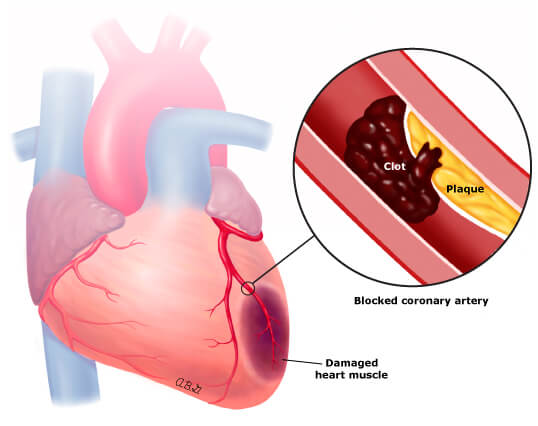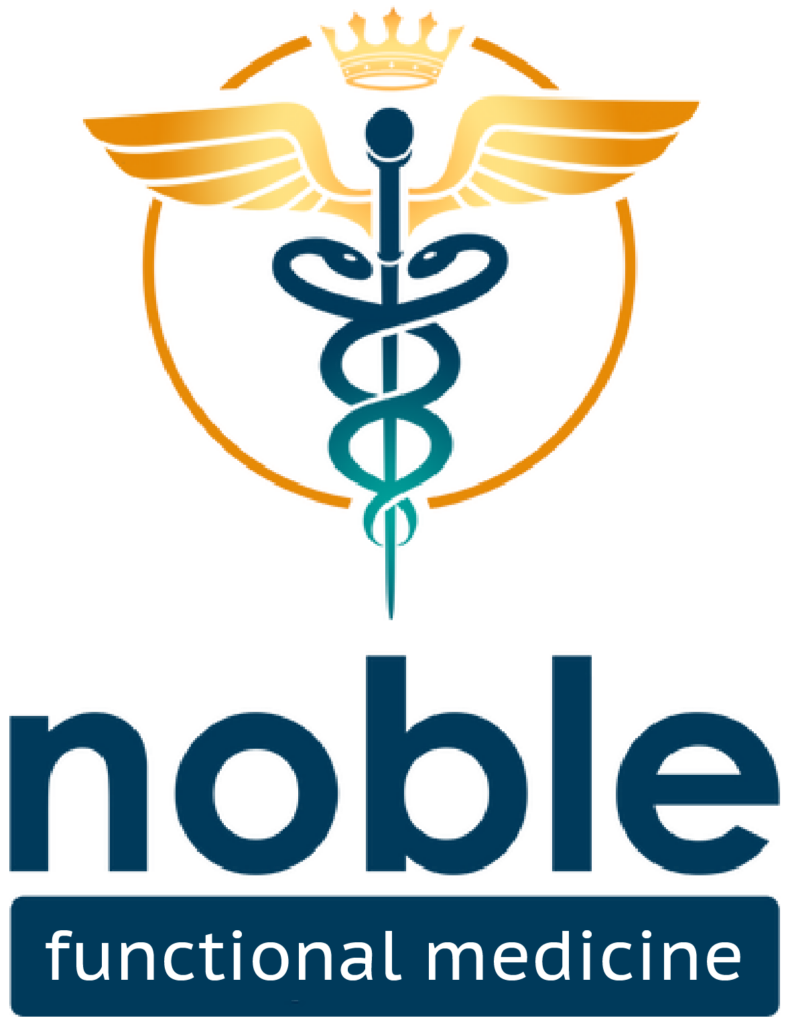With many medical conditions, there are often signs and symptoms telling you that it’s there. And as the condition worsens, the signs and symptoms do as well.
But there are some conditions that don’t show any signs or symptoms until it’s too late. One of these medical conditions is called cardiovascular disease.
Cardiovascular disease, which is also known as heart disease, is a general term for diseases that affect the heart and its blood vessels. And it’s the number one silent killer in the world.¹
One type of cardiovascular disease is a heart attack. While all heart attacks are dangerous, a specific type called the widowmaker is especially life-threatening. These types of heart attacks have low survival rates, so it’s probably got you thinking – how can I keep one from happening?
Maybe you’ve tried to talk to your doctor about your concerns and worries, only to be told to eat less, exercise more, and reduce your stress. But you feel like everything isn’t being addressed.
Something’s missing.
Many of the patients I see have similar stories, and I’m here to tell you that you’re not imagining this – there are many key points of heart attack prevention that are getting missed in primary care.
So today, we’re going to go over the key things you can do to prevent an event like a heart attack, improve your health, and find out what’s missing from your current treatment plan. And most importantly, we’ll talk about the ways we can work together to get you on the right track.
By the end of this article, you’ll learn:
- What causes a widowmaker heart attack
- Ways you can prevent a heart attack
- Additional testing to prevent a heart attack
- Why metabolism is so important when it comes to heart health
What Causes a Widowmaker Heart Attack?
The main cause of a widowmaker heart attack is the same as other types of heart attacks – plaque build up in the arteries of the heart. And when this plaque ruptures, a blood clot forms, which causes a blockage of blood flow to the heart.

When it comes specifically to a widowmaker heart attack, this plaque rupture happens in a blood vessel that provides 50% of the heart’s blood supply: the left anterior descending artery (LAD artery). So when this artery is blocked, the damage to your heart is significant, and the risk of death is high.
So if you’re trying to prevent a heart attack like a widowmaker, the focus is preventing plaque build up in these arteries – a condition called coronary artery disease (CAD).
And the main way that we do this is by focusing on metabolism.
How Does Metabolism Impact Heart Health?
When you think of metabolism, you probably think of how good or bad your body is at burning calories.
But what if I told you it was so much more than that?
Our metabolism is involved with cholesterol levels, blood sugar, where we store fat in our body, and more. And all of these things impact the heart. If your metabolism isn’t working as well as it should be, you may have something called metabolic syndrome.
Metabolic syndrome is a group of certain health conditions that together increase the risk of diseases like heart attacks. Metabolic syndrome is diagnosed if you have three or more of the following:³
- A large waistline
- High blood pressure
- High blood sugar
- High triglyceride levels (a “bad” type of fat in the blood)
- Low HDL cholesterol levels (a “good” type of fat in the blood)
Each condition of metabolic syndrome affects the blood vessels and increases plaque build up. So even if you have just two of the above, you’re at a high risk of having CAD and eventually a heart attack.⁴
5 Ways You Can Prevent a Heart Attack
In order to correct metabolic syndrome and prevent a heart attack, lifestyle changes can’t be stressed enough. In fact, poor lifestyle choices make up 90% of the risk of having your first heart attack.¹
But everyone’s bodies are different, and there’s no one-size-fits-all diet or exercise regimen that will have everyone improve their heart attack risk. It takes a personalized approach. However, here are certain tips that you can start today to build your foundation and lower your heart attack risk.
1. Shake Up Your Exercise Routine
Exercise is a scientifically-proven way you can reduce your heart attack risk. Exercise has been shown to improve metabolism and decrease the risk of diabetes by:⁵
- Improving blood sugar control
- Improving sensitivity to insulin
- Decreasing cholesterol levels
Instead of just doing the same exercise routine, I recommend switching things up and doing both strength training and cardio. Cardio helps to burn fat and strengthen the heart muscle while lifting weights helps to build muscle and improve metabolism.
Doing just one session of weight lifting a week has been shown to significantly lower the risk of having a heart attack.⁶
And increasing your daily steps is another great way to improve your health. The more steps you get in, the lower your risk of having a heart attack is.⁷
2. Prioritize Your Sleep
With how busy we are, practicing good sleep hygiene can be difficult. But it’s so so important.
Poor sleep or lack of sleep has been shown to increase heart attack risk.⁸ Having a good bedtime routine is essential to getting a good night’s rest. Here are some ways you can improve your sleep quality:
- Don’t eat two hours before bedtime
- Avoid electronics one hour before bedtime
- Have a cup of tea
- Take a warm shower
- Avoid caffeine and alcohol before bedtime
If you try these tips and are still stressed or having trouble sleeping, there may be underlying causes. So it’s important to talk to your primary care provider to get these issues taken care of sooner rather than later.
3. Lower Your Stress Levels
Managing stress levels is another important way to prevent a heart attack.
Studies have shown that even if you don’t have other risk factors for a heart attack, chronic stress significantly increases the risk of having a heart attack.⁹
Some ways you can reduce stress include:
- Meditation
- Deep breathing
- Regular exercise
There are many guided meditations and deep breathing exercises you can find online for free.

4. Clean Up Your Diet
This next tip is usually one of the hardest for people. But it’s usually so difficult because the advice people get is usually generalized and really restrictive. This can make dietary changes difficult to stick to.
Do any of these sound familiar?
- Only eat salad and grilled chicken breast.
- Don’t eat any carbs.
- Decrease calories to 1200 a day.
Chances are, you’ve gotten advice like this in the past. And I’m here to tell you that it doesn’t work. When the focus is on disease prevention and optimizing the metabolism, we want to find ways to improve your diet that are actually sustainable.
While every diet plan for my patients is made just for them, here are some of the big tips I give people when they first start:
- Increase your protein, especially your first meal of the day
- Increase your fiber
- Decrease saturated fats
- Decrease processed foods
- Decrease alcohol intake
- Don’t eat close to bedtime
By making these changes, you can improve your blood sugar control, lower your cholesterol, improve you metabolism, and start to lose some weight.
It can be difficult to incorporate these tips into your diet, especially when you’re first getting started. So if you need some help, check out these 15 free heart healthy recipes.
5. Lose Belly Fat
Having a large waistline is another condition that can lead to metabolic syndrome and eventually a heart attack. A large waistline typically means that you’re carrying high levels of body fat around your midline. This type of fat is called visceral fat, and it’s directly linked to an increased risk of plaque build up and heart attacks.¹⁰
When used with diet and exercise, certain prescription medications like GLP-1s and weight-loss supplements like amarasate can help with visceral fat loss.
And if you’re wondering if you have visceral fat, getting a body composition scan can tell you. A body composition scan like the one offered at Noble Functional Medicine can show you exactly how much fat you have on your body and where it’s located. And as you lose weight and gain muscle, you’ll have a much better way to measure progress than a scale.
Additional Testing To Prevent A Heart Attack
In almost all cases, additional testing is crucial to get a complete picture of someone’s metabolism and heart health – especially if you’re focused on preventing a widowmaker heart attack.
Take cholesterol for example. High cholesterol contributes to heart attacks, and it’s often caused by the foods we eat and inactivity. However, high cholesterol can also be caused by genetics. But unless you get screened for this, you won’t have an opportunity to intervene and get treatment early.
So here’s some additional testing I recommend that people get.
Get Screened for Genetic Causes
One of the most important things to do when it comes to preventing any kind of disease is to check to see if your genetics put you at an increased risk. You may have certain genes working against you and your efforts for heart attack prevention. And it’s important to understand these genetic risks when coming up with a game plan.
The first genetic marker to screen for is lipoprotein a. Lipoprotein a is a type of lipid (fat) in the blood that’s similar to LDL or “bad” cholesterol. If you have high levels of lipoprotein a in your blood, you’re at a higher risk of having a heart attack.¹¹
About 20-30% of people in the world have high levels of lipoprotein a, and it’s passed down through families.¹² Yet many patients that come to me have never had this checked.
Another genetic marker to get checked is homocysteine. Homocysteine is a type of amino acid that’s responsible for the growth of cells and tissues in the body. High levels of homocysteine can be caused by genetics and are linked to an increased risk of heart attack.¹³
Check Your Fasting Insulin Level
Another condition that leads to metabolic syndrome and increases the risk of a heart attack is diabetes. This is screened for by many primary care providers by checking a blood sugar on basic labs as well as a hemoglobin A1c, which is an average blood sugar over three months.
However, one important test that’s missing is a fasting insulin level.
Insulin is a hormone that’s produced by the pancreas and helps to control blood sugar. Without knowing your fasting insulin level, it’s nearly impossible to get a complete picture of how well your body is controlling blood sugar.
Get A Scan of Your Heart
Certain people who are at a higher risk of heart disease may benefit from having a coronary artery calcium (CAC) scan. This is a type of CT scan that takes detailed pictures of the blood vessels of the heart called the coronary arteries.
These pictures will show if there’s plaque build-up in the coronary arteries and exactly how much of it there is. And if you’re found to have plaque build up or a blockage forming in the heart, we’ll work together to get you the treatment you need from a specialist.
Not everyone needs a CAC scan. But for some people, it can be life-saving. To find out if you’d benefit from a CAC scan, your risk of having a heart attack within the next 10 years needs to be calculated. Learn how we calculate this risk and more at the link below.
Are You Ready To Take Control Of Your Heart Health?
Preventing the widowmaker heart attack requires a proactive and personalized approach. While general guidelines provide a foundation, every person has unique risk factors, lifestyle challenges, and a metabolism that must be considered.
Taking steps such as optimizing metabolism, improving diet, managing stress, and engaging in regular exercise can significantly reduce your risk of a heart attack.
However, knowing your specific health markers and addressing hidden risk factors can make all the difference.
If you’re serious about protecting your heart and want a tailored strategy, booking a comprehensive heart assessment with Jennifer Kosova PA-C at Noble Functional Medicine is the best next step.
Jenn has helped numerous people realize their actual risk of disease and learn exactly how to get on the right track. Our detailed evaluation uncovers these potential risks, provides personalized recommendations, and makes sure that no aspect of prevention is overlooked.
Your heart health is too important to leave to chance. Schedule your heart assessment today and take control of your future.
Widowmaker Heart Attack: Frequently Asked Questions
What is the average age for a widow maker heart attack?
Widowmaker heart attacks are common in men in their 50s and 60s and women in their 60s and 70s. However, they can occur at younger ages, especially in people with high cholesterol, high blood pressure, diabetes, obesity, or a family history of heart disease.
Can you predict a heart attack?
While you can’t predict the exact moment a heart attack will occur, you can assess risk factors and warning signs. Tests like coronary artery calcium scans, cholesterol levels, fasting insulin levels, and genetic screenings can help find underlying issues. If you’re worried that you may be at high risk of a heart attack, a heart assessment can provide a clearer picture of your heart health.
What are the symptoms of a widowmaker heart attack?
A widowmaker heart attack often presents with severe chest pain or pressure, shortness of breath, and pain radiating to the jaw, neck, or arms. Other symptoms may include nausea, dizziness, sweating, and an abnormal heart rhythm. Because this type of heart attack can be sudden and severe, recognizing these warning signs early and seeking immediate medical attention is often the difference between life and death.
What should you do if you have symptoms of a heart attack?
If you experience symptoms of a heart attack, act immediately. Call 911 as soon as possible, and don’t attempt to drive yourself to the hospital. While waiting for emergency responders, chew aspirin (if not allergic) to help thin the blood and improve blood flow. Stay as calm as possible, loosen any tight clothing, and try to remain in a seated or reclined position. Early treatment is crucial in preventing severe heart damage or death, so don’t ignore warning signs.
References:
- Cardiovascular Disease – (nih.gov)
- Heart attack – (uptodate.com)
- What Is Metabolic Syndrome? – (nih.gov)
- Metabolic Syndrome and Coronary Artery Disease Risk: A Meta-Analysis of Observational Studies – (nih.gov)
- Effects of Exercise to Improve Cardiovascular Health – (nih.gov)
- Associations of Resistance Exercise with Cardiovascular Disease Morbidity and Mortality – (nih.gov)
- The association between daily step count and all-cause and cardiovascular mortality: a meta-analysis – (nih.gov)
- Influence of poor sleep on cardiovascular disease-free life expectancy: a multi-resource-based population cohort study – (nih.gov)
- Mental Stress and Cardiovascular Health—Part I – (nih.gov)
- Impact of visceral fat on coronary artery disease as defined by quantitative computed tomography angiography – (nih.gov)
- Lipoprotein(a) and Long-Term Cardiovascular Risk in a Multi-Ethnic Pooled Prospective Cohort – (sciencedirect.com)
- Lipoprotein(a): What to know about elevated levels – (nih.gov)
- Role of homocysteine in the development of cardiovascular disease – (nih.gov)




